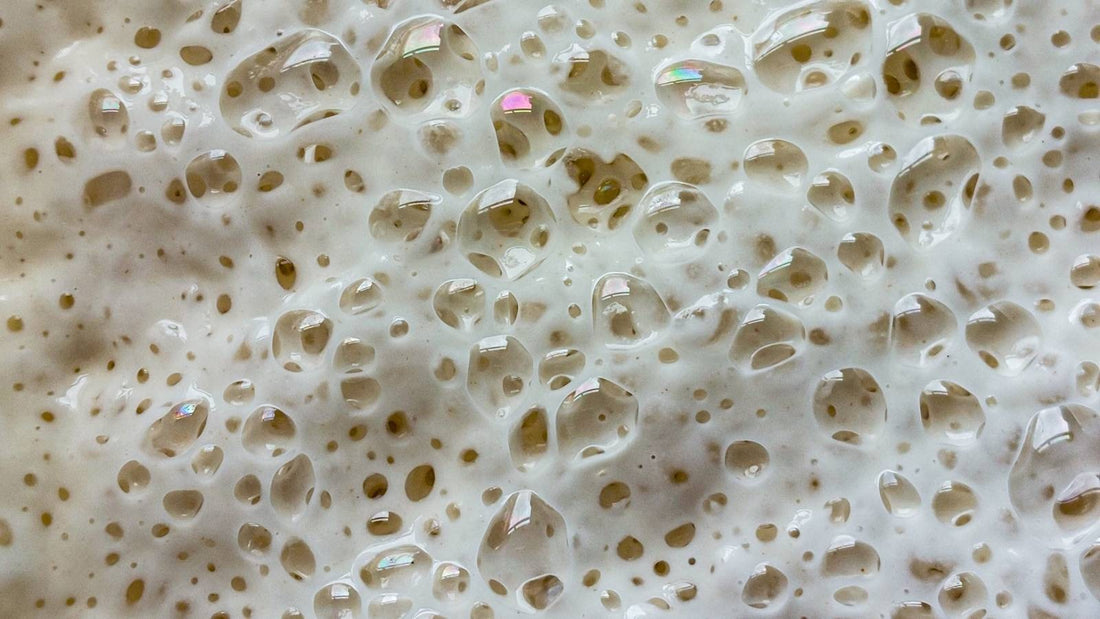
Why are some sourdough breads better than others?
Share
Breads can have different shapes, sizes, cooking methods, fermentations, flour quality, hydration and so on but this time let us consider only one key aspect of our sourdough bread: the sourdough itself, which means the pre-ferment that we use to proof our dough.
At the time of writing, 2022, sourdough breads are strongly back in vogue. Good artisan bakeries often sell a mix of sourdough and not sourdough breads, but nowadays you can find a sourdough loaf also in supermarkets.
As a customer it is extremely hard to understand what kind of product we are buying because there are no clear measurements or regulations regarding the sourdough itself.
Let me make a little list of the most common sourdough pre-ferments:
- Raisins sourdough
- Apple sourdough
- Plain water/flour sourdough
- Yogurt sourdough
Raisins:
Quite strong and recognizable flavor, it is often used in breads with seeds or rye breads. Slightly pungent, it makes a crumb that is very round on the palate.
Apple:
The classical mild sourdough that fits every preparation. You can feel the fruity notes already when it starts browning in the oven.
Plain:
It is slower to develop but if you are looking for a flat pre-ferment that does not have a specific note this might be the one for you.
Yogurt:
We chose this option for its typical tasting profile, so despite the lack of diaries in your preparation you will still have a lactic note.
Depending on the amount of water these pre-ferments can be:
- Liquid, like in an italian “Licoli”
- Solid, like a traditional “Sourdough”, “Masa Madre”,...
- Dried
The last option, dried, is a very practical one. Some specialized companies and mills have introduced dried sourdough for sale, and many bakeries use this method for making their bread because it allows anyone to simply add an amount of dried sourdough preparation to your dough and have a sourdough bread.
When dried sourdough powder started to be heavily commercialized supermarkets and industrial bakeries saw an opportunity, they were finally able to make a better bread without the effort of creating a sourdough culture (it takes 20-30 days) or maintaining it daily (for big productions it is a problem of space and stable fermentation control).
In 2022 we are in a situation where customers can find sourdough bread, here called “con masa madre” in Spain, almost anywhere.
But there is a catch. Supermarket’s sourdough bread does not taste that good.
What is the difference then? Why are some sourdoughs better than others?
Having sourdough as a component of our bread does not automatically mean that it will taste good.
Do not ever forget that our pre-ferment is alive, it is made of millions of acetic and lactic bacteria that will interact with flour, water and salt and keep growing.
The life of a pre-ferment can be described with the following graph.

The scale of the number of bacteria is logarithmic (it is a way of displaying numerical data over a very wide range of values in a compact way), and after the lag phase there is an exponential growth.
Growth is influenced by many factors (temperature, acidity, presence of other ingredients and so on), plus the balance between acetic and lactic bacteria will create a very different tasting profile.
A good baker is able to understand the sourdough, make it more acetic or lactic, nourish it properly for the right preparation, and use it when it is at the optimal fermentation point (during the stationary phase).
All these parameters the baker adjusts are not controlled in the dried sourdough, which is standardized and adapted by the manufacturer for ease of use.
Pairing a good or bad quality flour with any sourdough will drastically change the result, so even if a supermarket uses dried sourdough in their breads they might use low quality flours (which you can recognize reading the ingredients list when you find ascorbic acid or other types of correctors for weak low quality flours) .
To resume:
- The quality of your flour will dramatically change the result of your product, despite the presence of a sourdough pre-ferment.
- The measurements, ferment choices and care of a professional baker do not compare with industrial dried sourdough.
- Pre-ferments are alive and need to be constantly corrected and monitored for optimal results. Different products need different pre-ferments. A sourdough pre-ferment for a panettone is different than one for a baguette.
In Bakery de Stefano we make a very mild sourdough bread that does not have acid peaks. We prefer to focus on the overall complex aroma created by sourdough+good flour than a strong sourdough flavor alone.
For this reason our most beloved bread is the Whole-wheat with 6 seeds. You will almost never find it available in store, it is fully booked on a daily basis.
Flavio de Stefano